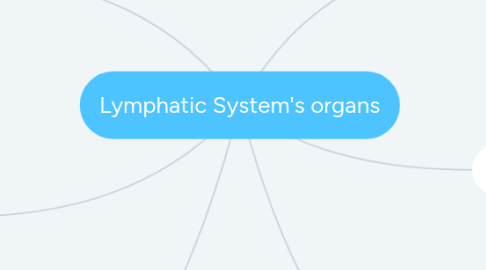Lymphatic System's organs
by Leigh-Ann Erasmus

1. 3. Thymus Gland
1.1. Location: Behind the sternum, in front of the heart.
1.2. Function: Facilitates the maturation of T-cells and is an important part of the immune system providing cell-mediated immunity. Protects against foreign substances and harmful micro-organisms.
1.3. T cells begin as hematopoietic precursors from the bone marrow and migrate to the thymus, where they are referred to as thymocytes.
2. 4. Payer's Patches
2.1. Know as a aggregated lymphatic follicles
2.2. Location: In the walls of the small intestines.
2.3. Resembles tonsils
2.4. Function: Is important for immune surveillance of materials within your digestive system. Immune surveillance refers to the process by which your immune system recognizes and destroys potential pathogens.
3. 5. Lymph Nodes
3.1. Location: Many lymph nodes are found in your head and neck region. Lymph nodes that frequently swell are in this area, as well as in your armpits and groin area.
3.2. Function: the filtering of lymph to identify and fight infection.
4. 1. Tonsils
4.1. Important part of the body's immune system.
4.2. Location: at the rear of the throat and palate.
4.3. Function: they can stop germs entering the body through the mouth or the nose (responsible for killing germs.
5. 2. Spleen
5.1. Location: In the upper left side of the abdomen, next the stomach and behind the left ribs.
5.2. Function: protect the body, clearing worn-out red blood cells and other foreign bodies from the bloodstream to help fight off infection
5.3. Function: Stores blood and is produces a lymph filter.
6. Function of the Lymphatic system:
6.1. 1. Is responsible for returning excess interstitial fluid to the blood.
6.2. 2.1To drain protein-containing fluid that escapes from blood capillaries into tissue space.
6.3. 2.2 Absorption of fats and fat-soluble vitamins from the digestive system & transport of these substances to the venous circulation.
6.4. 3. Defence against invading microorganisms & diseases. Produces immunities.


